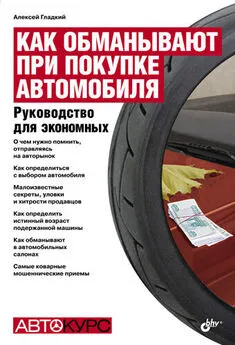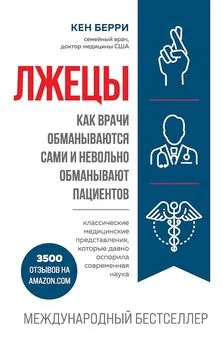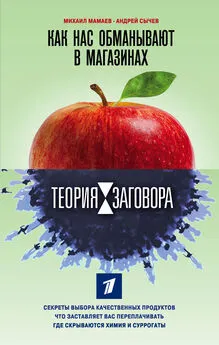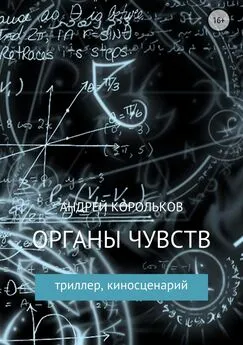Дональд Хоффман - Как нас обманывают органы чувств
- Название:Как нас обманывают органы чувств
- Автор:
- Жанр:
- Издательство:неизвестно
- Год:2022
- Город:Москва
- ISBN:978-5-17-150161-7
- Рейтинг:
- Избранное:Добавить в избранное
-
Отзывы:
-
Ваша оценка:
Дональд Хоффман - Как нас обманывают органы чувств краткое содержание
Мы видим мчащийся автомобиль, но не перебегаем перед ним дорогу; мы видим плесень на хлебе, но не едим его. По мнению автора, все эти впечатления не являются объективной реальностью. Последствия такого восприятия огромны: модельеры шьют более приятные к восприятию силуэты, а в рекламных кампаниях используются определенные цвета, чтобы захватить наше внимание. Только исказив реальность, мы можем легко и безопасно перемещаться по миру.
Дональд Дэвид Хоффман – американский когнитивный психолог и автор научно-популярных книг. Он является профессором кафедры когнитивных наук Калифорнийского университета, совмещая работу на кафедрах философии и логики. Его исследования в области восприятия, эволюции и сознания получили премию Троланда Национальной академии наук США.
Как нас обманывают органы чувств - читать онлайн бесплатно ознакомительный отрывок
Интервал:
Закладка:
52
Jones, I. L., and Hunter, F. M. 1993. “Mutual sexual selection in a monogamous seabird,” Nature 362: 238–39; Jones, I. L., and Hunter, F. M. 1999. “Experimental evidence for a mutual inter – and intrasexual selection favouring a crested auklet ornament,” Animal Behavior 57(3): 521–28; Zubakin, V. A., Volodin, I. A., Klenova, A. V., Zubakina, E. V., Volodina, E. V., and Lapshina, E. N. 2010. “Behavior of crested auklets (Aethia cristatella, Charadriiformes, Alcidae) in the breeding season: Visual and acoustic displays,” Biology Bulletin 37(8): 823–35.
53
Smuts, B. B. 1995. “The evolutionary origins of patriarchy,” Human Nature 6: 1–32.
54
Buss, D. M. 1994. “The strategies of human mating,” American Scientist 82: 238–49; Gil-Burmann, C., Pelaez, F., and Sanchez, S. 2002. “Mate choice differences according to sex and age: An analysis of personal advertisements in Spanish newspapers,” Human Nature 13: 493–508; Khallad, Y. 2005. “Mate selection in Jordan: Effects of sex, socio-economic status, and culture,” Journal of Social and Personal Relationships, 22: 155–68; Todosijevic, B., Ljubinkovic, S., and Arancic, A. 2003. “Mate selection criteria: A trait desirability assessment study of sex differences in Serbia,” Evolutionary Psychology 1: 116–26; Moore, F. R., Cassidy, C., Smith, M. J. L., and Perrett, D. I. 2006. “The effects of female control of resources on sex-differentiated mate preferences,” Evolution and Human Behavior 27: 193–205; Lippa, R. A. 2009. “Sex differences in sex drive, sociosexuality, and height across 53 nations: Testing evolutionary and social structural theories,” Archives of Sexual Behavior 38: 631–51; Schmitt, D. P. 2012. “When the difference is in the details: A critique of Zentner and Mtura Stepping out of the caveman’s shadow: Nations’ gender gap predicts degree of sex differentiation in mate preferences,” Evolutionary Psychology 10: 720–26; Schmitt, D. P., Youn, G., Bond, B., Brooks, S., Frye, H., Johnson, S., Klesman, J., Peplinski, C., Sampias, J., Sherrill, M., and Stoka, C. 2009. “When will I feel love? The effects of culture, personality, and gender on the psychological tendency to love,” Journal of Research in Personality 43: 830–46.
55
Buss, D. M., and Schmitt, D. P. 1993. “Sexual strategies theory: An evolutionary perspective on human mating,” Psychological Review 100: 204–32; Brewer, G., and Riley, C. 2009. “Height, relationship satisfaction, jealousy, and mate retention,” Evolutionary Psychology 7: 477–89; Courtiol, A., Ramond, M., Godelle, B., and Ferdy, J. 2010. “Mate choice and human stature: Homogamy as a unified framework for understanding mate preferences,” Evolution 64(8): 2189–2203; Dunn, M. J., Brinton, S., and Clark, L. 2010. “Universal sex differences in online advertisers’ age preferences: Comparing data from 14 cultures and 2 religious groups,” Evolution and Human Behavior 31: 383–93; Ellis, B. J. 1992. “The evolution of sexual attraction: Evaluative mechanisms in women,” in J. Barkow, L. Cosmides, and J. Tooby, eds., The Adapted Mind (New York: Oxford), 267–288; Cameron, C., Oskamp, S., and Sparks, W. 1978. “Courtship American style: Newspaper advertisements,” Family Coordinator 26: 27–30.
56
Rhodes, G., Morley, G., and Simmons, L. W. 2012. “Women can judge sexual unfaithfulness from unfamiliar men’s faces,” Biology Letters 9: 20120908.
57
Leivers, S., Simmons, L. W., and Rhodes, G. 2015. “Men’s sexual faithfulness judgments may contain a kernel of truth,” PLoS ONE 10(8): e0134007, doi: 10.1371/journal.pone.0134007.
58
Thornhill, R., Gangestad, S. W. 1993. “Human facial beauty: Averageness, symmetry and parasite resistance,” Human Nature 4: 237–69; Thornhill, R., and Gangestad, S. W. 1999. “Facial attractiveness,” Trends in Cognitive Science 3: 452–60; Thornhill, R., and Gangestad, S. W. 2008. The Evolutionary Biology of Human Female Sexuality (New York: Oxford University Press); Penton-Voak, I. S., Perrett, D. I., Castles, D. L., Kobayashi, T., Burt, D. M., Murray, L. K., and Minamisawa, R. 1999. “Female preference for male faces changes cyclically,” Nature 399: 741–42.
59
Muller, M. N., Marlowe, F. W., Bugumba, R., and Ellison, P. T. 2009. “Testosterone and paternal care in East African foragers and pastoralists,” Proceedings of the Royal Society, B 276: 347–54; Storey, A. E., Walsh, C. J., Quinton, R. L., and Wynne-Edwards, K. E. 2000. “Hormonal correlates of paternal responsiveness in new and expectant fathers,” Evolution and Human Behavior 21: 79–95.
60
DeBruine, L., Jones, B. C., Frederick, D. A., Haselton, M. G., Penton-Voak, I. S., and Perrett, D. I. 2010. “Evidence for menstrual cycle shifts in women’s preferences for masculinity: A response to Harris (in press), ‘Menstrual cycle and facial preferences reconsidered,’ ” Evolutionary Psychology 8: 768–75; Johnston, V. S., Hagel, R., Franklin, M., Fink, B., and Grammer, K. 2001. “Male facial attractiveness: Evidence for a hormone-mediated adaptive design,” Evolution and Human Behavior 22: 251–67; Jones, B. C., Little, A. C., Boothroyd, L. G., DeBruine, L. M., Feinberg, D. R., Law Smith, M. J., Moore, F. R., and Perrett, D. I. 2005, “Commitment to relationships and preferences for femininity and apparent health in faces are strongest on days of the menstrual cycle when progesterone level is high,” Hormones and Behavior 48: 283–90; Little, A. C., Jones, B. C., and DeBruine, L. M. 2008. “Preferences for variation in masculinity in real male faces change across the menstrual cycle,” Personality and Individual Differences 45: 478–82; Vaughn, J. E., Bradley, K. I., Byrd-Craven, J., and Kennison, S. M. 2010. “The effect of mortality salience on women’s judgments of male faces,” Evolutionary Psychology 8: 477–91.
61
Johnston, L., Arden, K., Macrae, C. N., and Grace, R. C. 2003. “The need for speed: The menstrual cycle and personal construal,” Social Cognition 21: 89–100; Macrae, C. N., Alnwick, K. A., Milne, A. B., and Schloerscheidt, A. M. 2002. “Person perception across the menstrual cycle: Hormonal influences on social-cognitive functioning,” Psychological Science 13: 532–36; Roney, J. R., and Simmons, Z. L. 2008. “Women’s estradiol predicts preference for facial cues of men’s testosterone,” Hormones and Behavior 53: 14–19; Rupp, H. A., James, T. W., Ketterson, E. D., Sengelaub, D. R., Janssen, E., and Heiman, J. R. 2009. “Neural activation in women in response to masculinized male faces: Mediation by hormones and psychosexual factors,” Evolution and Human Behavior 30: 1–10; Welling, L. L., Jones, B. C., DeBruine, L. M., Conway, C. A., Law Smith, M. J., Little, A. C., Feinberg, D. R., Sharp, M. A., and Al-Dujaili, E. A. S. 2007. “Raised salivary testosterone in women is associated with increased attraction to masculine faces,” Hormones and Behavior 52: 156–61.
62
Feinberg, D. R., Jones, B. C., Law Smith, M. J., Moore, F. R., DeBruine, L. M., Cornwell, R. E., Hillier, S. G., and Perrett, D. I. 2006. “Menstrual cycle, trait estrogen level, and masculinity preferences in the human voice,” Hormones and Behavior 49: 215–22; Gangestad, S. W., Simpson, J. A., Cousins, A. J., Garver-Apgar, C. E., and Christensen, P. N. 2004. “Women’s preferences for male behavioral displays change across the menstrual cycle,” Psychological Science 15: 203–7; Gangestad, S. W., Garver-Apgar, C. E., Simpson, J. A., and Couins, A. J. 2007. “Changes in women’s mate preferences across the ovulatory cycle,” Journal of Personality and Social Psychology 92: 151–63; Grammer, K. 1993. “5-α-androst-16en-3α-on: A male pheromone? A brief report,” Ethology and Sociobiology 14: 201–8; Havlicek, J., Roberts, S. C., and Flegr, J. 2005. “Women’s preference for dominant male odour: Effects of menstrual cycle and relationship status,” Biology Letters 1: 256–59; Hummel, T., Gollisch, R., Wildt, G., and Kobal, G. 1991. “Changes in olfactory perception during the menstrual cycle,” Experentia 47: 712–15; Little, A. C., Jones, B. C., and Burriss, R. P. 2007. “Preferences for masculinity in male bodies change across the menstrual cycle,” Hormones and Behavior 52: 633–39; Lukaszewski, A. W., and Roney, J. R. 2009. “Estimated hormones predict women’s mate preferences for dominant personality traits,” Personality and Individual Differences 47: 191–96; Provost, M. P., Troje, N. F., and Quinsey, V. L. 2008. “Short-term mating strategies and attraction to masculinity in point-light walkers,” Evolution and Human Behavior 29: 65–69; Puts, D. A. 2005. “Mating context and menstrual phase affect women’s preferences for male voice pitch,” Evolution and Human Behavior 26: 388–97; Puts, D. A. 2006. “Cyclic variation in women’s preferences for masculine traits: Potential hormonal causes,” Human Nature 17: 114–27.
63
Bellis, M. A., and Baker, R. R. 1990. “Do females promote sperm competition? Data for humans,” Animal Behaviour 40: 997–99; Gangestad, S. W., Thornhill, R., and Garver, C. E. 2002. “Changes in women’s sexual interests and their partners’ materetention tactics across the menstrual cycle: Evidence for shifting conflicts of interest,” Proceedings of the Royal Society of London B 269: 975–82; Gangestad, S. W., Thornhill, R., and Garver-Apgar, C. E. 2005. “Women’s sexual interests across the ovulatory cycle depend on primary partner developmental instability,” Proceedings of the Royal Society of London B 272: 2023–27; Haselton, M. G., and Gangestad, S. W. 2006. “Conditional expression of women’s desires and men’s mate guarding across the ovulatory cycle,” Hormones and Behavior 49: 509–18; Jones, B. C., Little, A. C., Boothroyd, L. G., DeBruine, L. M., Feinberg, D. R., Law Smith, M. J., Moore, F. R., and Perrett, D. I. 2005. “Commitment to relationships and preferences for femininity and apparent health in faces are strongest on days of the menstrual cycle when progesterone level is high,” Hormones and Behavior 48: 283–90; Pillsworth, E., and Haselton, M. 2006. “Male sexual attractiveness predicts differential ovulatory shifts in female extra-pair attraction and male mate retention,” Evolution and Human Behavior 27: 247–58; Guéguen, N. 2009a. “The receptivity of women to courtship solicitation across the menstrual cycle: A field experiment,” Biological Psychology 80: 321–24; Guéguen, N. 2009b. “Menstrual cycle phases and female receptivity to a courtship solicitation: An evaluation in a nightclub,” Evolution and Human Behavior 30: 351–55; Durante, K. M., Griskevicius, V., Hill, S. E., Perilloux, C., and Li, N. P. 2011. “Ovulation, female competition, and product choice: Hormonal influences on consumer behavior,” Journal of Consumer Research 37: 921–35; Durante, K. M., Li, N. P., and Haselton, M. G. 2008. “Changes in women’s choice of dress across the ovulatory cycle: Naturalistic and laboratory task-based evidence,” Personality and Social Psychology Bulletin 34: 1451–60; Haselton, M. G., Mortezaie, M., Pillsworth, E. G., Bleske-Rechek, A., and Frederick, D. A. 2007. “Ovulatory shifts in human female ornamentation: Near ovulation, women dress to impress,” Hormones and Behavior 51: 40–45; Hill, S. E., and Durante, K. M. 2009. “Do women feel worse to look their best? Testing the relationship between self-esteem and fertility status across the menstrual cycle,” Personality and Social Psychology Bulletin 35: 1592–601.
Читать дальшеИнтервал:
Закладка:



![Элис Хоффман - Верная [litres]](/books/1059188/elis-hoffman-vernaya-litres.webp)






